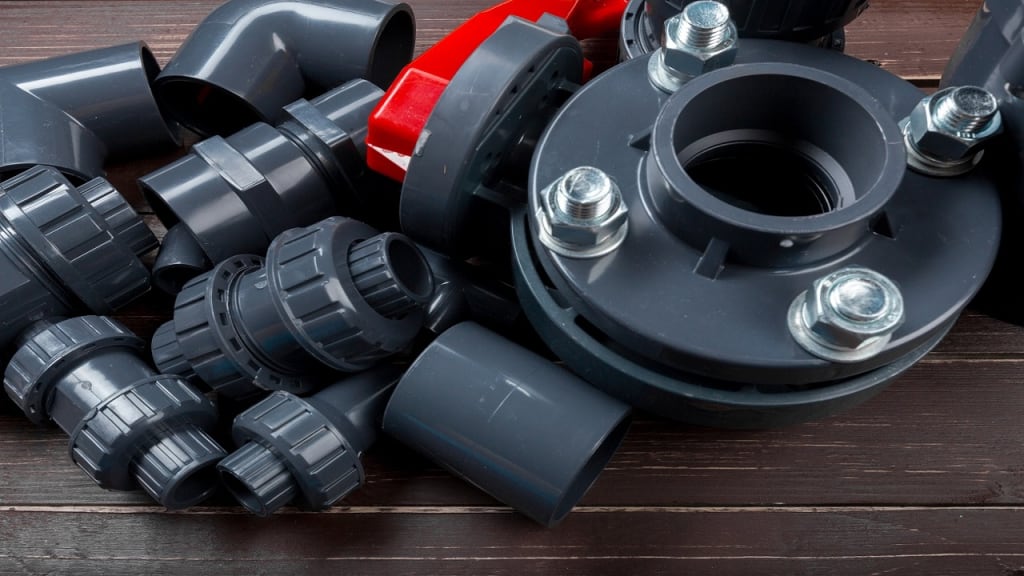How To Choose the Right Drainage Supplies For Your Needs
This article offers a detailed guide to assist you in selecting the ideal drainage supplies for your requirements.

Choosing the right drain pipe is essential for maintaining adequate water flow and avoiding problems such as clogs and leaks in drainage systems. With various options available in the market, it can be challenging to identify the most suitable one for your needs.
This article offers a detailed guide to assist you in selecting the ideal drainage supplies for your requirements.
Understanding the Basics of Drainage Systems
A drainage system is designed to remove excess water from an area to prevent flooding, soil erosion, and structural damage. It consists of several key components:
Gutters and Downspouts: These capture rainwater from roofs and direct it into the drainage system.
Drainpipes: These pipes carry water away from the building and into the broader drainage system.
Catch Basins: Installed at low points, these collect water from surface runoff and channel it into drainpipes.
Drainage Ditches and Channels: These guide water across a property to prevent pooling and erosion.
Dry Wells and Sumps: These underground features allow water to infiltrate the ground or be pumped away from critical areas.
Choosing the Right Drain Pipes
When it comes to drainpipes, there are several types to consider, each with its own set of advantages and applications:
- PVC (Polyvinyl Chloride) Pipes: These are the most commonly used pipes for drainage due to their durability, lightweight nature, and corrosion resistance. PVC pipes are available in various diameters and are easy to install, making them a popular choice for residential and commercial projects.
- HDPE (High-Density Polyethylene) Pipes: HDPE pipes are ideal for areas prone to ground movement or heavy loads. They are resistant to chemicals and abrasion, making them suitable for industrial applications.
- Cast Iron Pipes: These robust, long-lasting pipes are heavier and more expensive than PVC and HDPE. They are used in commercial buildings and older residential properties where traditional materials are preferred.
- Clay Pipes: Often used in historic or specialized projects, clay pipes are resistant to chemical corrosion and have a long lifespan. However, they are fragile and more challenging to install than modern alternatives.
- Concrete Pipes: These are used for large-scale drainage systems, such as those required for municipal stormwater management. Concrete pipes are incredibly durable and can handle high volumes of water, but their installation requires heavy machinery and expertise.
Factors to Consider When Choosing Drain Pipes
- Project Scale and Requirements: The size and complexity of your drainage project will influence your choice of drainpipes. For small residential projects, PVC or HDPE pipes are often sufficient. Larger commercial or municipal projects may require the strength and capacity of concrete pipes.
- Soil and Environmental Conditions: The soil and environmental conditions can impact the performance of different drainpipe materials. For example, HDPE pipes are ideal for areas with unstable soil, while cast iron or concrete pipes are better suited for areas with high chemical exposure.
- Budget: PVC pipes offer an excellent balance of affordability and performance for many applications. However, investing in more durable materials like HDPE or concrete may be necessary for specific projects.
- Local Building Codes and Regulations: Ensure that your choice of drain pipes complies with local building codes and regulations. Some areas may have specific requirements regarding the materials used for drainage systems.
Installation Tips for Drainage Systems
Proper installation is crucial for the effectiveness and longevity of your drainage system.
1. Plan Your System
Before starting any installation, create a detailed plan of your drainage system. Identify the locations of gutters, downspouts, catch basins, and drainpipes. Ensure the system directs water away from your property and into appropriate drainage areas.
2. Excavate Properly
Proper excavation is essential for installing drain pipes and other components. Ensure that trenches are deep enough to accommodate the pipes and provide adequate slope for water flow. A common guideline is a slope of 1/4 inch per foot.
3. Use Proper Bedding Material
Place a gravel or crushed stone layer at the bottom of the trenches before laying drain pipes. This bedding material provides a stable base and promotes proper drainage around the pipes.
4. Secure Connections
Ensure that all pipe connections and fittings are secure and leak-free. Use appropriate sealants and adhesives for the pipe material. Solvent cement is commonly used for PVC pipes, while HDPE pipes may require specialized connectors.
5. Test the System
Before covering trenches and completing the installation, test the drainage system to ensure it functions correctly. Run water through the system and check for leaks, proper flow, and blockages.
6. Maintain the System
Regular maintenance is essential for keeping your drainage system in optimal condition. Clear debris from gutters, catch basins, and grates regularly. Inspect pipes and fittings for signs of damage and make repairs as needed.
Conclusion
Choosing the right drainage supplies is crucial for the effectiveness and longevity of your drainage system. With the right approach and materials, you can ensure that water flows away from your property efficiently, protecting your home and investment for years to come!
About the Creator
Enjoyed the story? Support the Creator.
Subscribe for free to receive all their stories in your feed. You could also pledge your support or give them a one-off tip, letting them know you appreciate their work.





Comments
There are no comments for this story
Be the first to respond and start the conversation.